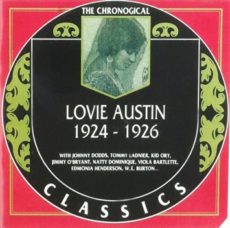
Daily Dose Of jazz…
Lovie Austin was born Cora Calhoun on September 19, 1887 in Chattanooga, Tennessee and grew up with eight brothers and sisters. She studied music theory at Roger Williams University and Knoxville College which was uncommon for African American woman and jazz musicians alike during the time.
In 1923, Lovie Austin decided to make Chicago, Illinois her home, living and working there for the rest of her life. She was often seen elegantly dressed, racing around town in her Stutz Bearcat with leopard skin upholstery. Her early career was in vaudeville, playing piano and performing in variety acts. Accompanying blues singers was Lovie’s specialty, and can be heard on recordings by Ma Rainey – Moonshine Blues, Ida Cox – Wild Women Don’t Have the Blues, Ethel Waters – Craving Blues, and Alberta Hunter – Sad ‘n’ Lonely Blues.
She led her own band, the Blues Serenaders, which usually included trumpeters Tommy Ladnier, Bob Shoffner, Natty Dominique, or Shirley Clay on cornet, Kid Ory or Albert Wynn on trombone, and Jimmy O’Bryant or Johnny Dodds on clarinet, along with banjo and occasional drums. The Blues Serenaders developed their own unique sound within the jazz genre, straying away from the typical jazz band paradigm.
Austin worked with many other top jazz musicians of the 1920s, including Louis Armstrong. They worked on a song together that was called Heebie Jeebies. Her skills as songwriter can be heard in the classic Down Hearted Blues, co-written with Alberta Hunter. Singer Bessie Smith turned the song into a hit in 1923. She was also a session musician for Paramount Records and recorded with the Blues Serenaders in 1923.
When the classic blues craze waned in the early 1930s, Lovie became the musical director for the Monogram Theater in Chicago where all the T.O.B.A. acts played. She worked there for 20 years and during wartime, she was reported to be working as a security guard at a defense plant to support herself.
After World War II she became a pianist at Jimmy Payne’s Dancing School at Penthouse Studios, and performed and recorded occasionally.
In 1961, nearly forty years after participating in her first recordings, Lovie recorded Alberta Hunter with Lovie Austin’s Blues Serenaders, as part of Riverside Records’ “Living Legends” series, produced by radio WHAT-FM disc jockey and jazz critic Chris Albertson. Austin’s songs included Sweet Georgia Brown, C Jam Blues and Gallon Stomp.
Pianist Lovie Austin, who is cited as Mary Lou Williams greatest influence and one of the best pianists during the Harlem Renaissance, retired in 1962 and passed away on July 10, 1972 in Chicago.

More Posts: piano
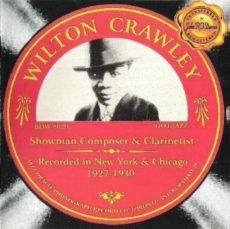
Daily Dose Of Jazz…
Wilton Crawley was born on July 18, 1900 in Virginia with his family moving to Philadelphia, Pennsylvania. Some of his musical influences may be traced back to Virginia and its many farms and barnyards with cackles and clucks like a chicken, oinks like a pig, and neighs like a goat that he . It was in Philadelphia that along with his reed-playing brother Jimmy that they formed their first band. During the ’20s and ’30s, the clarinetist found success with a variety act featuring his singing and playing. Though not the most versatile musician he had a sound and style that utilized weird speech-like sound effects and extended use of slap tonguing, sometimes filling out whole lines of a solo with obnoxious little pops.
Between 1927 and 1930 Wilton recorded his own compositions for OKeh and Victor Records, working with Paul Barbarin, Lonnie Johnson, Henry “Red” Allen, Pops Foster, Luis Russell, Jelly Roll Morton, Eddie Heywood and Eddie Lang among others. After splitting with Morton in the 1930s he toured England and after the death of his father and his friend guitarist Eddie Lang, his personal problems derailed his career and slipped into oblivion.
His most famous pieces include Crawley Clarinet Moan, She’s Forty With Me, Put a Flavor to Love, Futuristic Blues and Irony Daddy Blues. Much of this music reveals his attempts to recreate jazz sounds from other instruments, particularly the muted trumpet effects that might have been done by an artist such as Bubber Miley. While some of this sound effect activity have may influenced Anthony Braxton, he may have more in common with the clarinetists who worked with Spike Jones or even later rock showmen like Arthur Brown. Some of the membership in his ensembles such as Wilton Crawley & His Orchestra or the Washboard Rhythm Kings remains unknown, however, banjoist Johnny St. Cyr and blues guitarist Lonnie Johnson show up in his bands.
It is unfortunate that many of the recordings originally done under his own name have all been reissued in various Jelly Roll Morton retrospectives, as he went on to become a lasting legend of early jazz while the clarinetist went into obscurity. Clarinetist, composer, contortionist and vaudevillian Wilton Crawley passed away in 1948 in Maryland.
Sponsored By

Voices From The Community
![]()
More Posts: clarinet
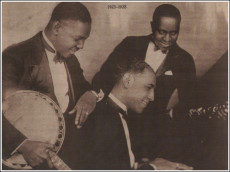
Daily Dose Of Jazz…
Louis Stanley Hooper was born on May 18, 1894 in North Buxton, Ontario, Canada but was raised in Ypsilanti, Michigan and studied piano at the Detroit Conservatory, playing locally in dance orchestras in the 1910s. Around 1920 he moved to New York City and recorded frequently with Elmer Snowden and Bob Fuller in the middle of the decade. He was known to perform with both of them in Harlem as well as with other ensembles.
Lou served for some time as the house pianist for Ajax Records, accompanying many blues singers on record, including Martha Copeland, Rosa Henderson, Lizzie Miles, Monette Moore and Ethel Waters. He was a participant in the Blackbirds revue of 1928.
In 1932 Hooper returned to Canada, where he played in Mynie Sutton’s dance band, the Canadian Ambassadors. Working locally as a soloist and in ensembles for the next two decades, he was brought back into the limelight by the Montreal Vintage Music Society in 1962.
Lou recorded a two-LP set with Bill Coleman titled UK LIve:Satin Doll, Vol. 1 & 2 in 1967 and released an album as a leader of ragtime piano tunes in 1973 titled Lou Hooper, Piano.
Wearing the educator hat, he taught at the University of Prince Edward Island late in his life and appeared regularly on CBC television in Halifax. Pianist Lou Hooper passed away on September 17, 1977 in Charlestown, Prince Edward Island. His papers, which include unpublished compositions and an autobiography, are now held at the National Library of Canada in Ottawa.
![]()
More Posts: piano
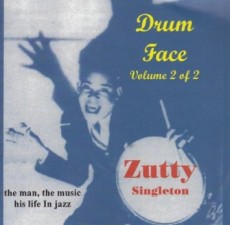
Daily Dose Of Jazz…
Born Arthur James Singleton on May 14, 1898 in Bunkie, Louisiana, Zutty” Singleton was raised in New Orleans. By the time he was seventeen he was working professionally with Steve Lewis in 1915. He served with the Navy during World War I and after returning to New Orleans he worked with Papa Celestin, Big Eye Louis Nelson, John Robichaux and Fate Marable.
Leaving for St. Lois, Missouri, he played in Charlie Creath’s band before moving on to Chicago, Illinois. There he played with Doc Cooke, Dave Peyton, Jimmy Noone as well as theater bands. He joined Louis Armstrong’s band with Earl Hines and between 1928-1929 performed on the landmark recordings Louis Armstrong and His Hot Five. He then moved to New York City with Armstrong.
During the next decade he would play with Armstrong and also Bubber Miley, Tommy Ladnier, Fats Waller, Jelly Roll Morton and Otto Hardwick. He also played in the band that backed Bill Robinson. In 1934, Singleton returned to Chicago but by 1937 was back in New York playing with Mezz Mezzrow and Sidney Bechet.
1943 saw Zutty moving to Los Angeles, where he led his own band, played for motion pictures, and in 1944 was featured on Orson Welles’s CBS radio series, The Orson Welles Almanac. He later worked with Slim Gaillard, Wingy Manone, Eddie Condon, Nappy Lamare, Art Hodes, Oran “Hot Lips” Page and Max Kaminsky.
Between 1943 and 1950 he appeared in the films Stormy Weather, New Orleans and Young Man With A Horn. Retiring after suffering a stroke in 1970, drummer Zutty Singleton passed away in New York City on July 14, 1975, aged 77.
![]()
More Posts: drums
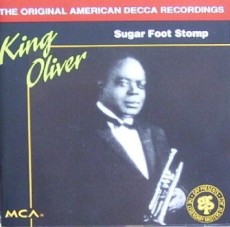
Daily Dose Of Jazz…
King Oliver was born Joseph Nathan Oliver on May 11, 1885 in Aben, Louisiana. He was also known as Joe Oliver and moved to New Orleans in his youth. He first studied the trombone and then changed to cornet. From 1908 to 1917 he played cornet in New Orleans brass and dance bands, and also in the city’s red-light district known as Storyville.
Oliver co-led a band with trombonist Kid Ory that was considered to be New Orleans’ hottest and best in the late 1910s. He gained great popularity in New Orleans across economic and racial lines, and was in demand for music jobs from rough working-class black dance halls to white society debutante parties.
With the closing of Storyville, Joe packed up his wife and child and moved to Chicago, Illinois in 1918. There he found work with clarinetist Lawrence Duhé, bassist Bill Johnson, trombonist Roy Palmer and drummer Paul Barbarin, eventually becoming the leader. By 1922 he was billing himself as King Oliver and his Creole Jazz Band at the Royal Gardens cabaret. His band included Louis Armstrong, Baby Dodds, Johnny Dodds, Lil Hardin, Honoré Dutrey and William Manuel Johnson. The following year they recorded for Gennett, Okeh, Paramount and Columbia record labels, bringing Dixieland to the attention of a much wider audience.
The mid-Twenties saw King enlarging his band to nine musicians, began performing more written arrangements with jazz solos, disbanding to do more freelance work in New York, Over the course of his career Oliver pioneered the use of mutes, including the rubber plumber’s plunger, derby hat, bottles and cups but his favorite mute was a small metal mute made by the C.G. Conn Instrument Company. He performed mostly on cornet, but like many cornet players he switched to trumpet in the late 1920s.
Oliver was also a talented composer, and wrote many tunes that are still regularly played, including Dippermouth Blues, Sweet Like This, Canal Street Blues, and Doctor Jazz. His recording Wa Wa Wa with the Dixie Syncopators can be credited with giving the name wah-wah to such techniques.
As an educator he influenced young New Orleans and Chicago players like Tommy Ladnier, Paul Mares, Muggsy Spanier, Johnny Wiggs Frank Guarente, Louis Panico and Louis Armstrong. The latter he taught, gave him his job in Kid Ory’s band and then summoned him to Chicago to play in his band.
As a businessman his acumen was often less than his musical ability losing jobs at the Savoy Ballroom and the Cotton Club by holding out for moe money than they were willing to pay. Ellington took the Cotton Club job and catapulted to fame
Oliver’s managers stole money from him and then the Great Depression hit losing his life savings to a failed Chicago bank, and bookings became lean.Oliver also had health problems, suffering from the gum disease pyorrhea, caused by his love of sugar sandwiches. He began employing younger musicians to play solos like up-and-coming trumpeter Henry “Red” Allen. Coupled with health problems suffering from periodontitis and his diminished capacity to play left him no choice but to stop playing by 1937.
Cornetist and bandleader King Oliver died in poverty of arteriosclerosis in a Savannah rooming house on April 10, 1938 at age 52, too broke to afford treatment. His sister spent her rent money to have his body brought to New York, where he was buried at Woodlawn Cemetery in the Bronx. In attendance were his friends Louis Armstrong, Clarence Williams, Coleman Hawkins, Lionel Hampton, W.C. Handy, Milt Jackson, and Max Roach. In 2007 he was inducted as a charter member of the Gennett Records Walk of Fame in Richmond, Indiana.
![]()


